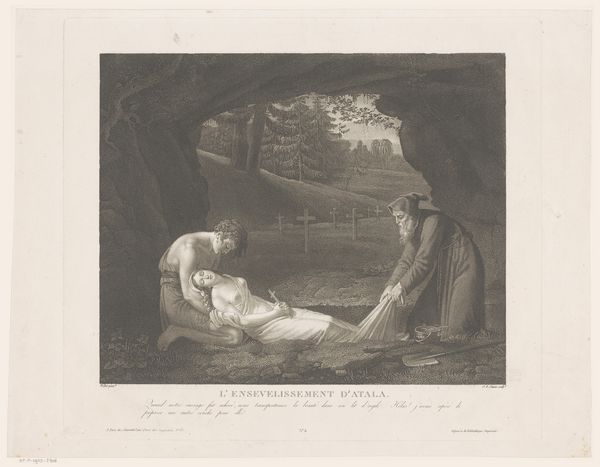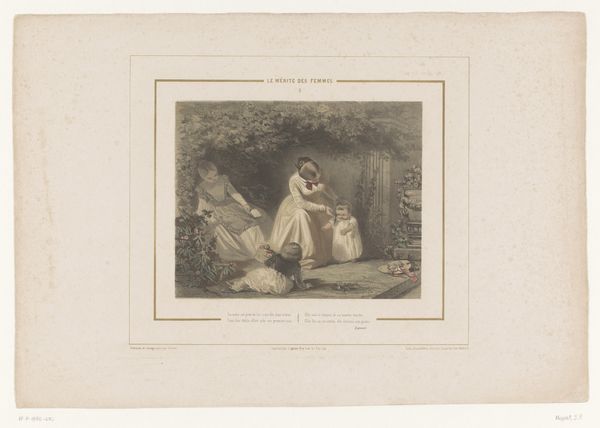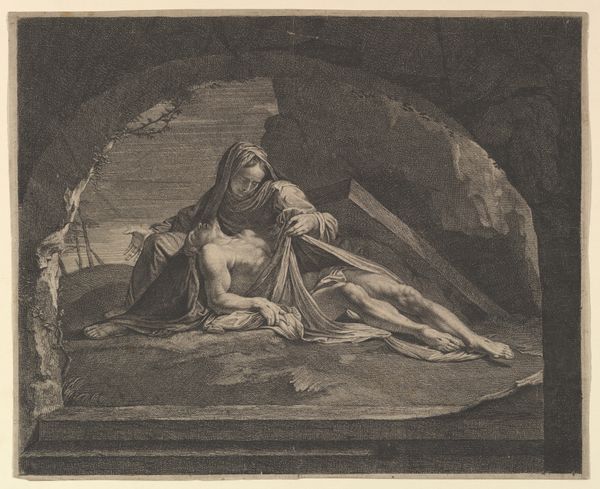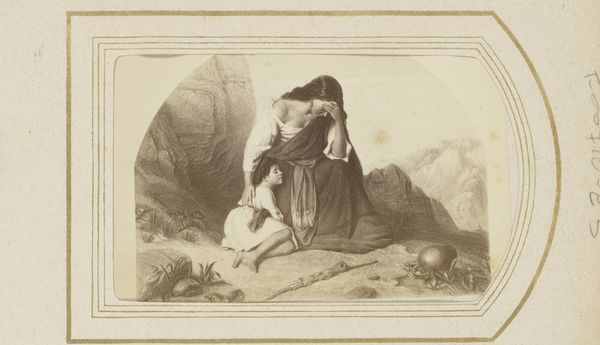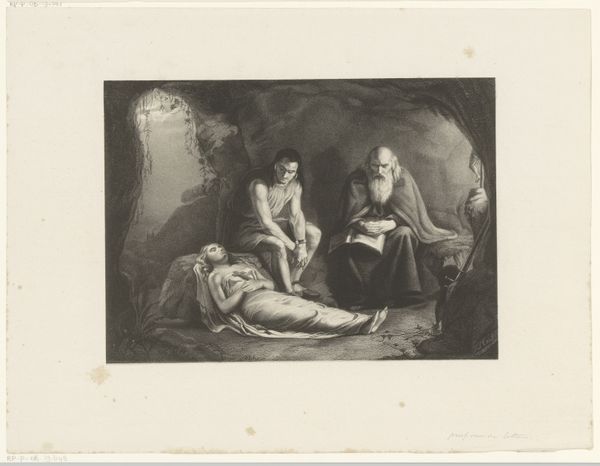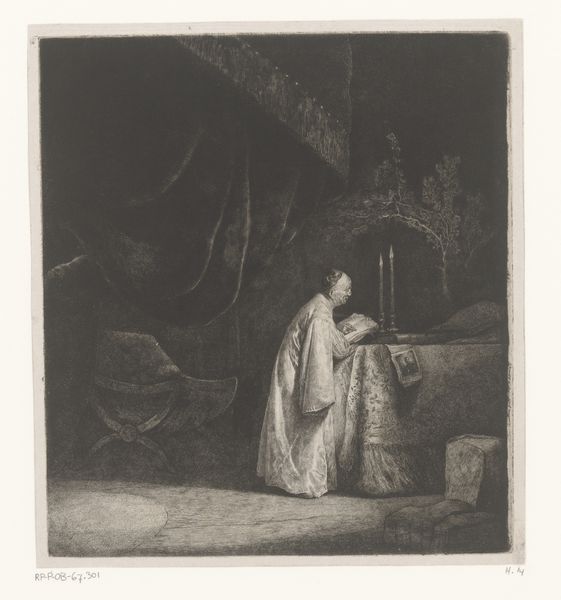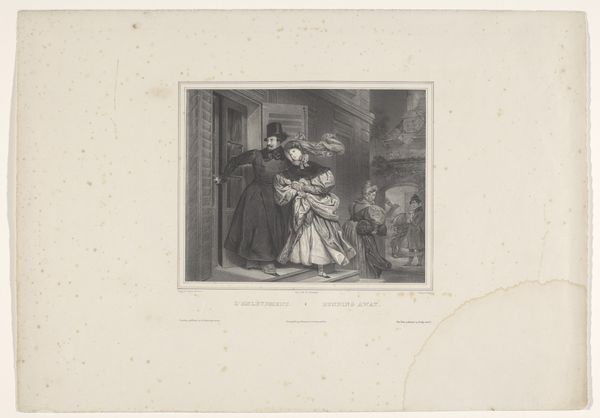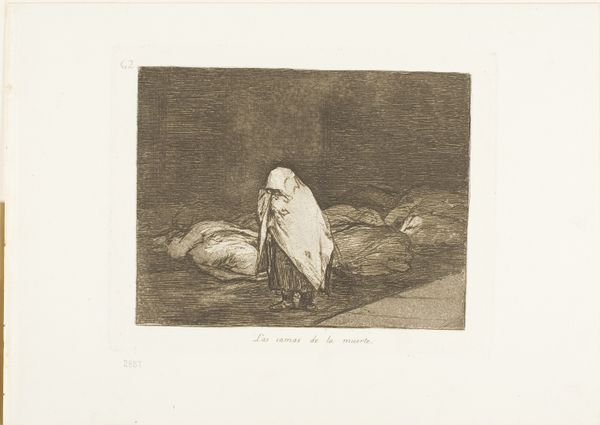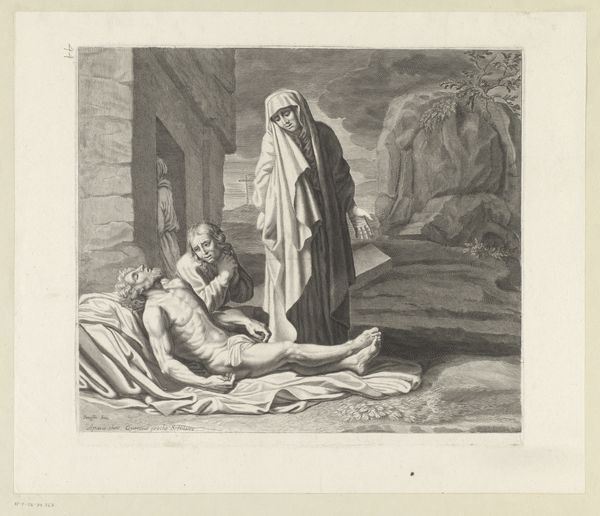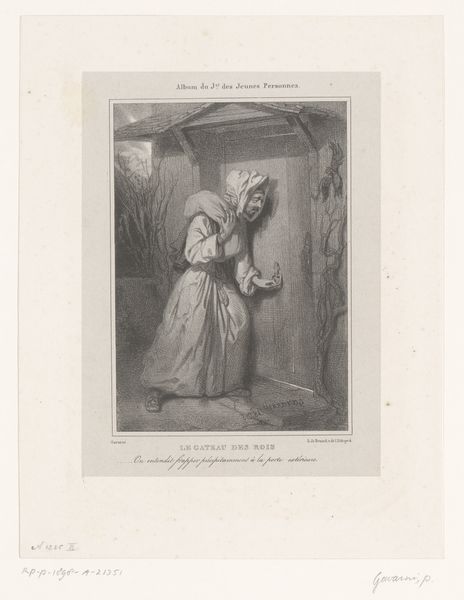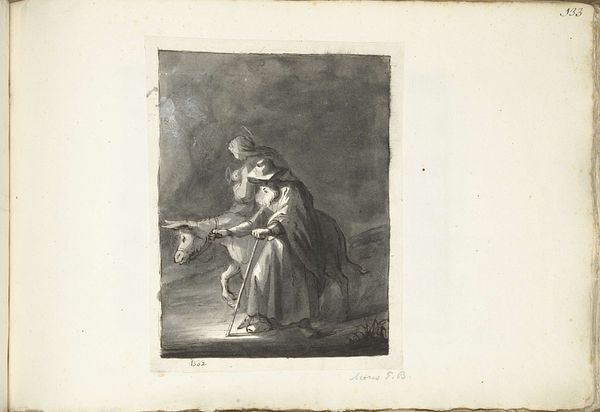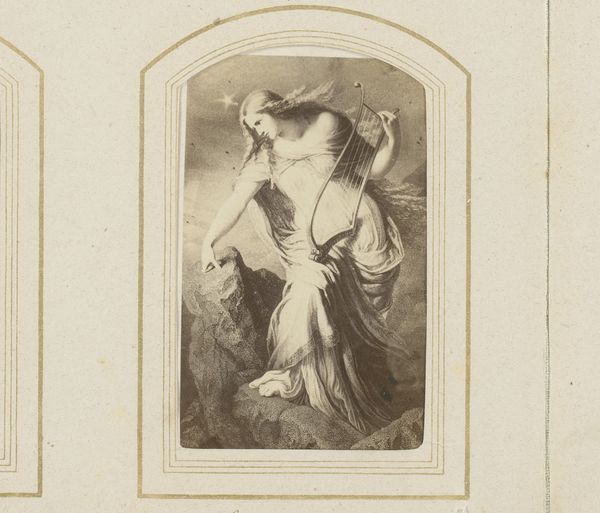
drawing, print, etching, charcoal
#
drawing
#
narrative-art
# print
#
etching
#
charcoal drawing
#
figuration
#
charcoal
#
history-painting
#
academic-art
Dimensions: height 155 mm, width 205 mm
Copyright: Rijks Museum: Open Domain
Editor: This is "Antonius begraaft Paulus," an 1854 etching by Léopold Flameng. The somber scene depicts two figures, presumably monks, in what appears to be a cave. It feels very solemn, almost like a staged theatrical scene. How do you interpret this work? Curator: This image provides a window into 19th-century academic art and its engagement with religious and historical narratives. Consider the power structures implicit in its creation and reception. Etchings like this served as reproductive prints, making art accessible, but also controlled the dissemination of imagery. What socio-political role might this particular scene have played? Editor: It's interesting you mention control, because it does feel… deliberate. The light, the poses… Was there something specific about this narrative that resonated then? Curator: Certainly. The lives of saints, like Anthony and Paul, offered moral instruction. Academic art, often commissioned by institutions, reinforced societal values. Think about how the setting—the stark cave—contributes. Does it evoke humility, piety, perhaps the power of the Church amidst social upheaval? Editor: So the bleak setting is not just about visual drama, but a statement about the virtues of the church at a difficult time? Curator: Precisely. And consider the act of burial. It signifies respect, ritual, and continuity of tradition. This image likely served as a form of visual propaganda, reminding viewers of the importance of faith and established institutions during a period of rapid social change. Does that alter your initial perception of the scene's solemnity? Editor: Definitely. It makes me think about the power that institutions had, using art to maintain their influence. I came in seeing solemnity, now I see carefully crafted messaging. Curator: And that's the key. By examining art within its historical and institutional context, we unveil its deeper meanings and its role in shaping public perception. Editor: That’s such an interesting viewpoint; thank you! Now I see that the quiet sorrow contains layers of complexity reflecting the dynamics of the time.
Comments
No comments
Be the first to comment and join the conversation on the ultimate creative platform.

